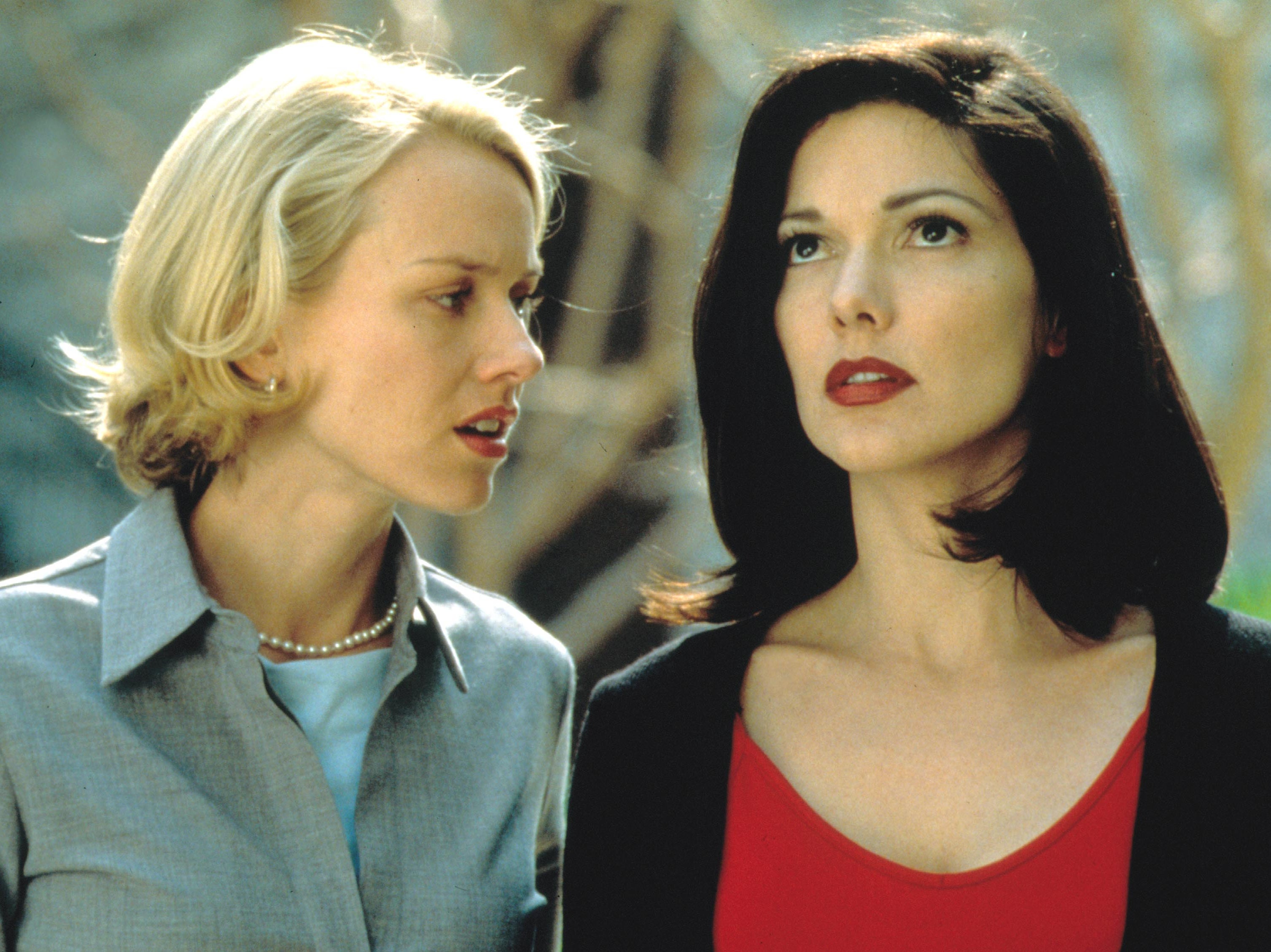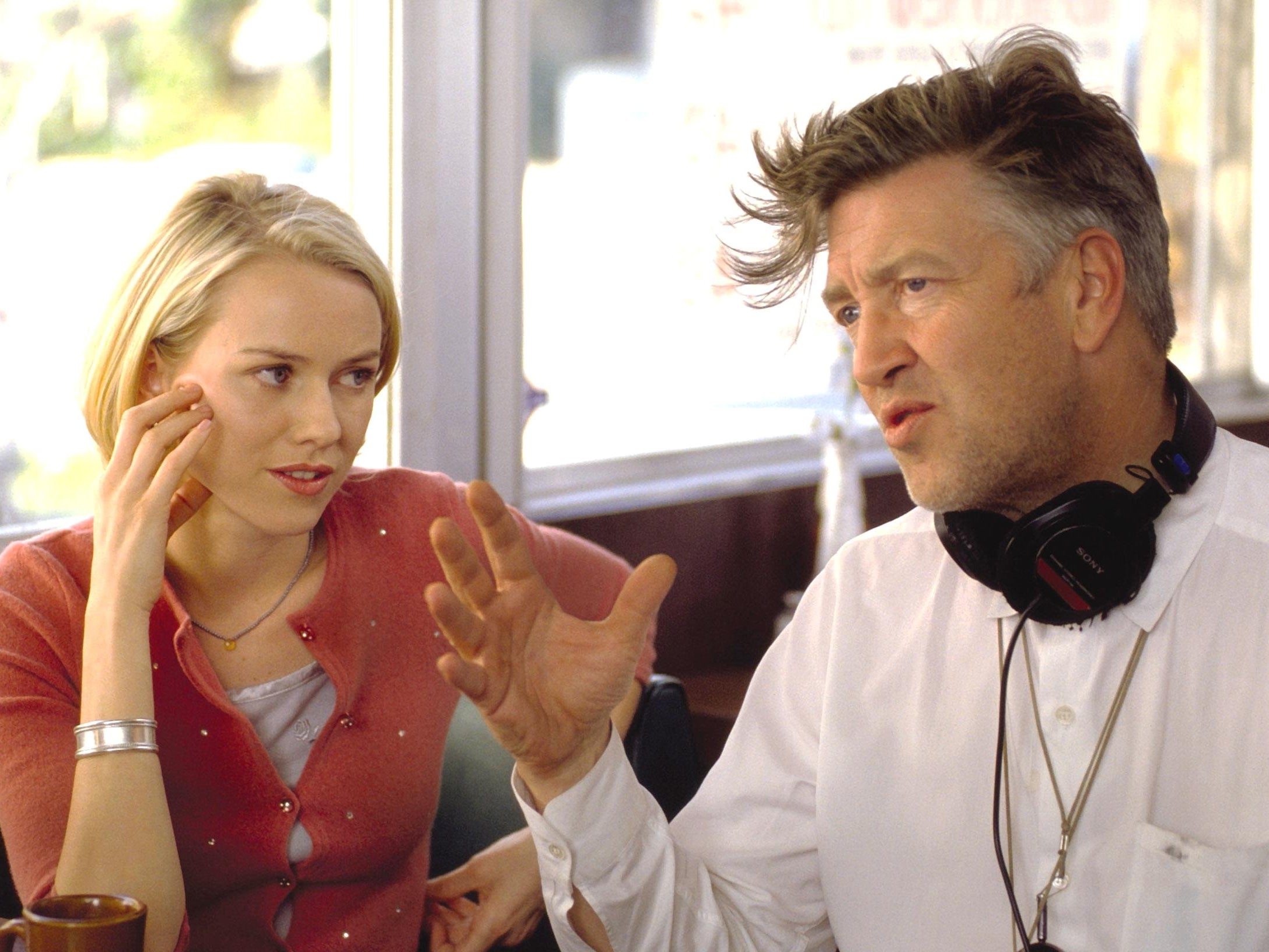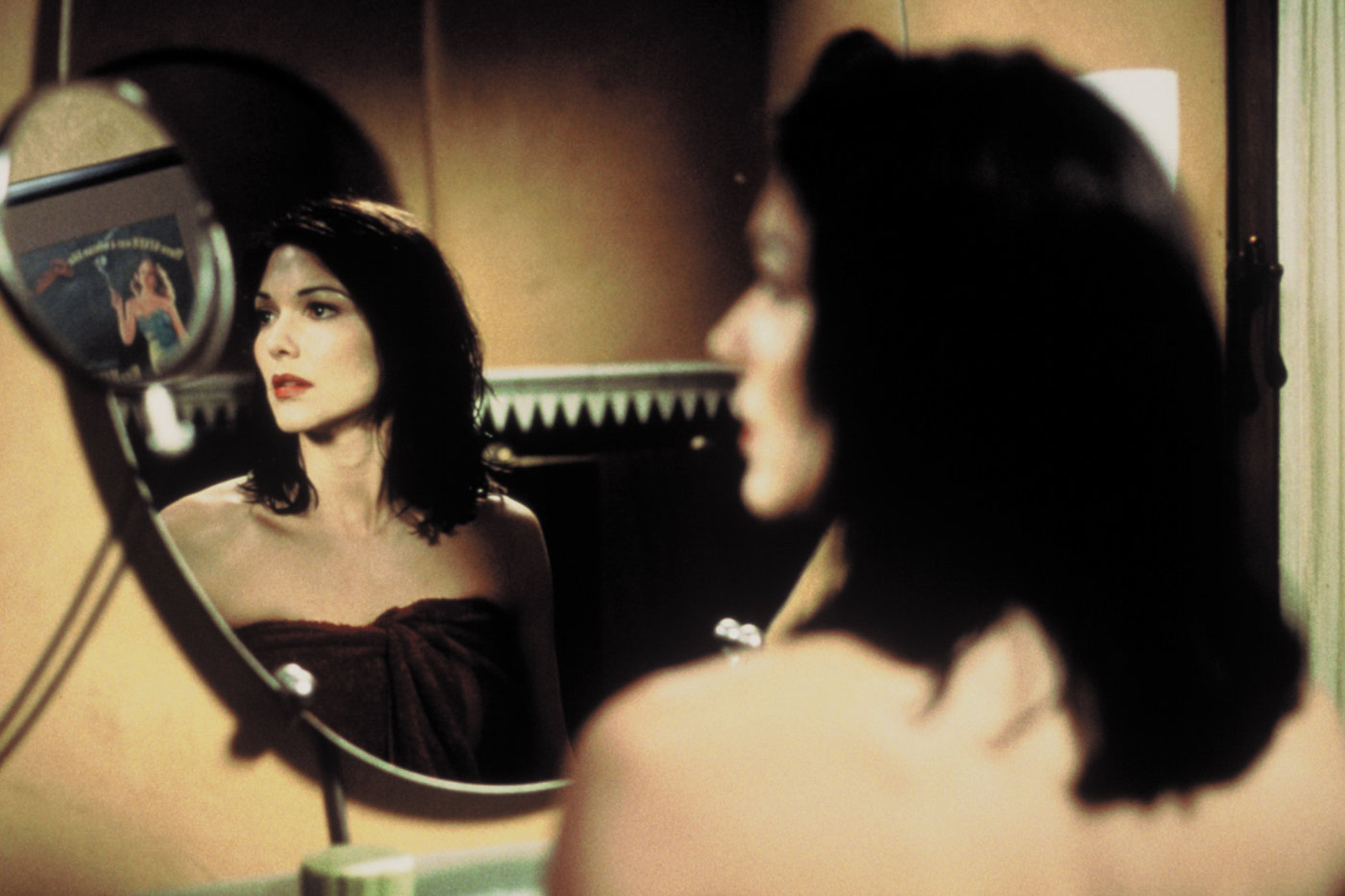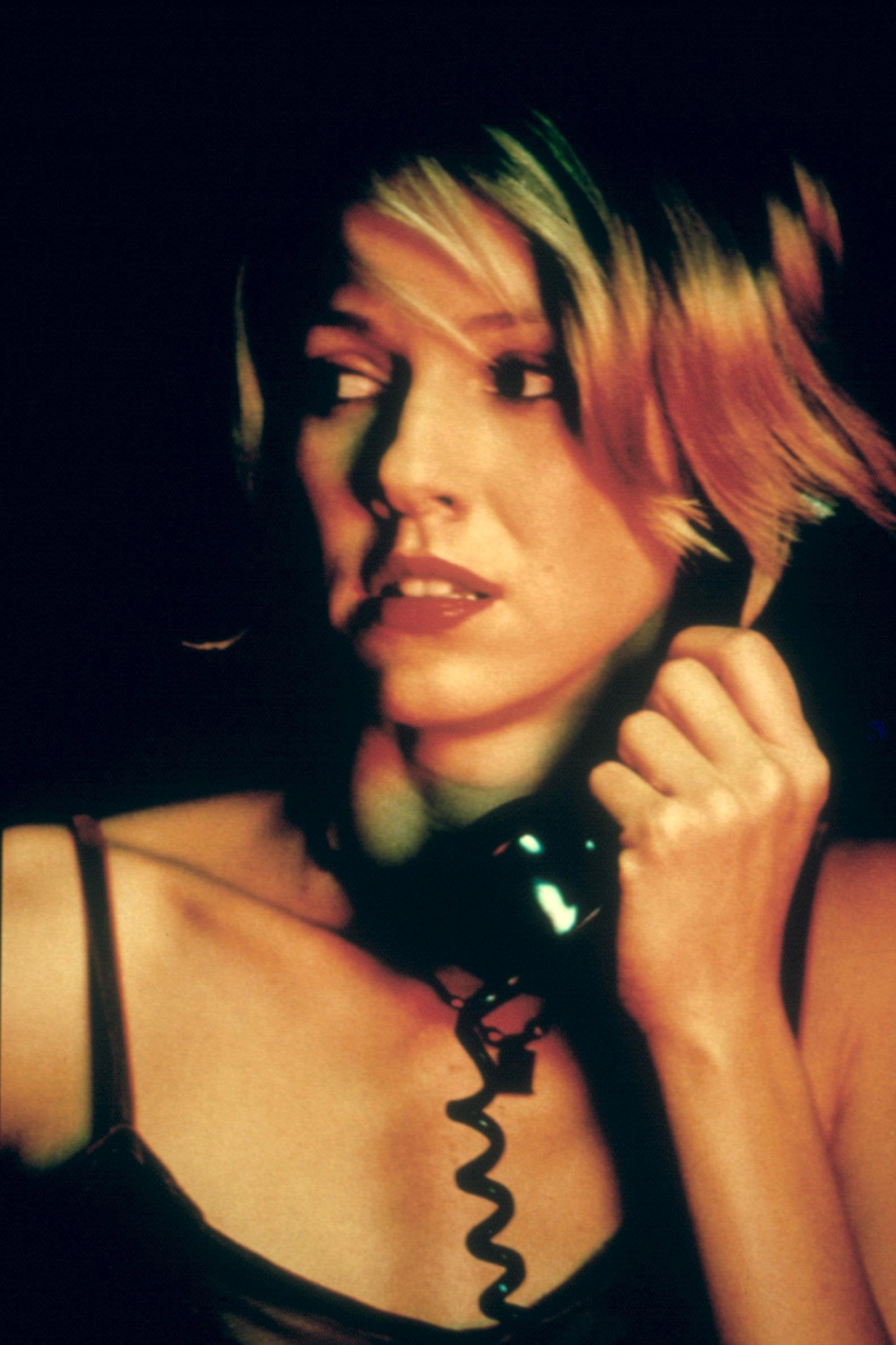Mullholland Drive at 20: A celebration of David Lynch’s strangest and finest film
The director’s surreal thriller is regarded as a cast-iron masterpiece, but it nearly didn’t see the light of day. Geoffrey Macnab looks back on its journey from early rejection to topping best film lists

It was like a bad dream. The ABC TV movie that David Lynch had just made as a pilot wasn’t picked up by the network. It wouldn’t be seen and wouldn’t spawn a series. Its lead star Naomi Watts, who had been struggling to establish herself in the movie business for years, cursed her luck. After “10 years of auditions and no breaks, carrying around all those years of rejection like a wound”, Watts had finally landed a high-profile job, and it would all amount to nothing.
The sets were taken down. The props and costumes were recycled.
Mulholland Drive had initially been regarded as a natural follow-up to Twin Peaks, Lynch’s triumph from a decade earlier, but, in early 1999, the project was abandoned by the ABC bosses. They felt the pilot was too slow and strange. Lynch hadn’t stuck to instructions to keep it to an hour. Not only were Watts and her co-star Laura Harring (a former Miss USA) relative unknowns, the network executives felt that the thirtysomethings were a little too old to appeal to a youthful TV-watching audience. As Lynch’s biography Room to Dream recounts, the ABC top brass also had gripes about such petty matters as “language” and “images of gunshot wounds, dog s*** and cigarettes”.
“I had a bad feeling,” Lynch later said of his unhappy collaboration with the Disney-owned broadcaster. “I remember thinking, ‘I’m in with the wrong bunch.’ The way some people think is they think money, and all of their decisions are based on the fear of not making money.”
In May 1999, when Lynch travelled to the Cannes festival to present his latest feature, The Straight Story, he had just learned “the series officially wasn’t a go” and was close to abandoning Mulholland Drive altogether. He certainly couldn’t have guessed that he would be back at the festival two years later, with a new version of the TV pilot, now turned into a feature. Nor would any of his collaborators have been able to predict that today, 20 years after its Cannes premiere, the film is now regarded as a cast-iron masterpiece, voted as the best film of the 21st century so far in a 2016 BBC poll.
Read more:
The case of Mulholland Drive illustrates how absurdly thin the lines between success and failure remain in Hollywood. It underlines the key role that European producers and film festivals have often played as a counterbalance to the US majors and to snarling critics like the New York Observer’s Rex Reed, who famously dismissed the film as “a load of moronic and incoherent garbage”, “pointless and revolting” and “lurid gibberish”.
Mulholland Drive was “rescued” by French producer Pierre Edelman. He had previously worked for Ciby 2000, a French production company that operated along strictly anti-Hollywood lines. Its founder, wealthy businessman Francis Bouygues, acted like a renaissance-era patron to the directors (Mike Leigh, Jane Campion, Pedro Almodóvar and Lynch among them), whose work he admired. Ciby had folded in the late Nineties but Edelman, by then at StudioCanal, kept its ethos alive. With his persuasion, the French bought the pilot from ABC and provided the extra funding for Lynch to shoot new material and turn Mulholland Drive into a feature film.
Of course, in hindsight, the troubled gestation was ideal for a film as fractured, strange and dreamlike as Mulholland Drive. This was a story about two women adrift in LA. One, the brunette Rita (Harring) has lost her memory after a spectacular slow-motion car crash on Mulholland Drive in the dead of night. Just before the crash, she is about to be shot. Just after it, she is found wandering down the streets in a daze. The second woman is a squeaky clean Canadian blonde called Betty Elms (Watts), who has just arrived at LA airport. She looks like a latter-day Doris Day and has come to town dreaming of stardom.

Throughout the film, sunshine and darkness, beauty and squalor, present and past, collide. The story has the warped logic of a nightmare and yet is also often funny. Comic highlights include a farcical moment in which hotshot Hollywood director Adam Kesher (Justin Theroux) finds his wife in bed with the pool man (played well but incongruously by the hirsute country star Billy Ray Cyrus of “Achy Breaky Heart” fame). The cuckolded husband reacts by pouring glutinous pink paint all over her jewellery.
Often, the most absurd moments – for example, the appearance of a Gene Autry-like cowboy (Monty Montgomery) – start in comic groove but end up absolutely chilling.
Lynch both satirises Hollywood and indulges in a little fond nostalgia for its glory days. He fills the film with venerable stars from that gilded past, among them Ann Miller and Lee Grant in eccentric character roles. The writer-director has spoken of his admiration both of Billy Wilder’s Sunset Boulevard and of Marilyn Monroe. (“You could say that Laura Palmer [from Twin Peaks] is Marilyn Monroe and Mulholland Drive is about Marilyn Monroe, too. Everything is about Marilyn,” Lynch once said of the star’s pervasive influence on his work.) For reasons never explained, Betty’s aunt’s apartment has a huge poster of Rita Hayworth in film noir classic Gilda on its wall. The Harring character, whose wanderings eventually lead her to the apartment, borrows the name “Rita”.

The tone of Mulholland Drive is set early on in a famous scene in which two friends, Dan (Patrick Fischler) and Herb (Michael Cooke) meet for a morning coffee in a Winkie’s cafe. Here, Lynch shows his uncanny ability to make harmless settings seem very threatening indeed. “I had a dream about this place,” Dan tells his friend. In the dream, which he has had twice, he is “scared like I can’t tell you”. Trying to get rid of the “god-awful feeling” induced by the dream, he ventures outside – and it’s only then that audiences realise he is still caught in the nightmare. Angelo Badalamenti’s brooding, rumbling score heightens yet further the extreme sense of unease.
Almost as disturbing as the blurring of dreams and reality are the film’s sexual politics. In one grotesque scene, a much older actor (Chad Everett) puts his hands all over Betty when she is auditioning for a role. It is disturbing precisely because this level of sexual harassment appears to be taken for granted. Nobody else watching is remotely surprised. Betty colludes, allowing the actor to pull her very close to him, delivering her own lines (“get out of here”) in a whisper and then kissing him.
Actors speak with reverence about Lynch’s intuition and kindness but he can be ruthless and sadistic when they don’t give him what he wants. In one late scene in Mulholland Drive in which Watts’s character, at the end of her tether, is shown masturbating, he insisted on take after take. “She wasn’t getting it, and you keep going until you get it,” he later justified his relentless, voyeuristic approach. “This girl is doing this because she’s hurt and angry and desperate, and a whole bunch of emotions are swimming and swirling inside her and it has to be a certain way.” In its own grim fashion, it’s one of the most powerful moments in the film, but would he have treated a male actor in the same fashion? It’s hard to envisage Lynch or anyone else getting away with behaviour like this today.

Twenty years on, such grim moments notwithstanding, Mulholland Drive remains as rich, mysterious and rewarding as ever. Almost every sequence can be interpreted in multiple different ways. That’s why a small industry has emerged, devoted to deciphering the film’s enigmas. Lynch himself provided 10 clues to “unlock the mystery of the film” but the hints themselves (for example, “notice the appearance of the red lampshade”) were surely designed to confound viewers yet more. He was proud of coming up with a conclusion for the film after the pilot was dropped by ABC but the way he wrapped matters up was to create a second character, Diane Selwyn, for Watts to play. Diane is Betty’s twisted reflection, a sour and self-pitying, small-time Hollywood failure whose dreams have long since crumbled.
The film is a cinephile’s delight, full of veiled references to other movies. When Rita begins wearing a blonde wig and starts to look more and more like Betty, the director is nodding both in the direction of Alfred Hitchcock’s Vertigo and to the famous moment in Ingmar Bergman’s Persona in which the two women’s faces merge.
Meanwhile, the recurrent motif of the key could easily have been borrowed from Maya Deren’s 1943 experimental short, Meshes of the Afternoon, which has a similar dreamlike feel.
At its simplest, the film can be read as a cautionary tale about a bright-eyed ingenue coming very badly unstuck in her pursuit of stardom. That, though, is only one element in a much bigger riddle.
In later years, Lynch was typically philosophical about the “strange route” Mulholland Drive took “to become what it became”. One doubts that even he could explain his real intentions in making the film, but that doesn’t lessen its eerie, unfathomable power in the slightest.
‘Mulholland Drive’ is available on Amazon Prime
Join our commenting forum
Join thought-provoking conversations, follow other Independent readers and see their replies
Comments